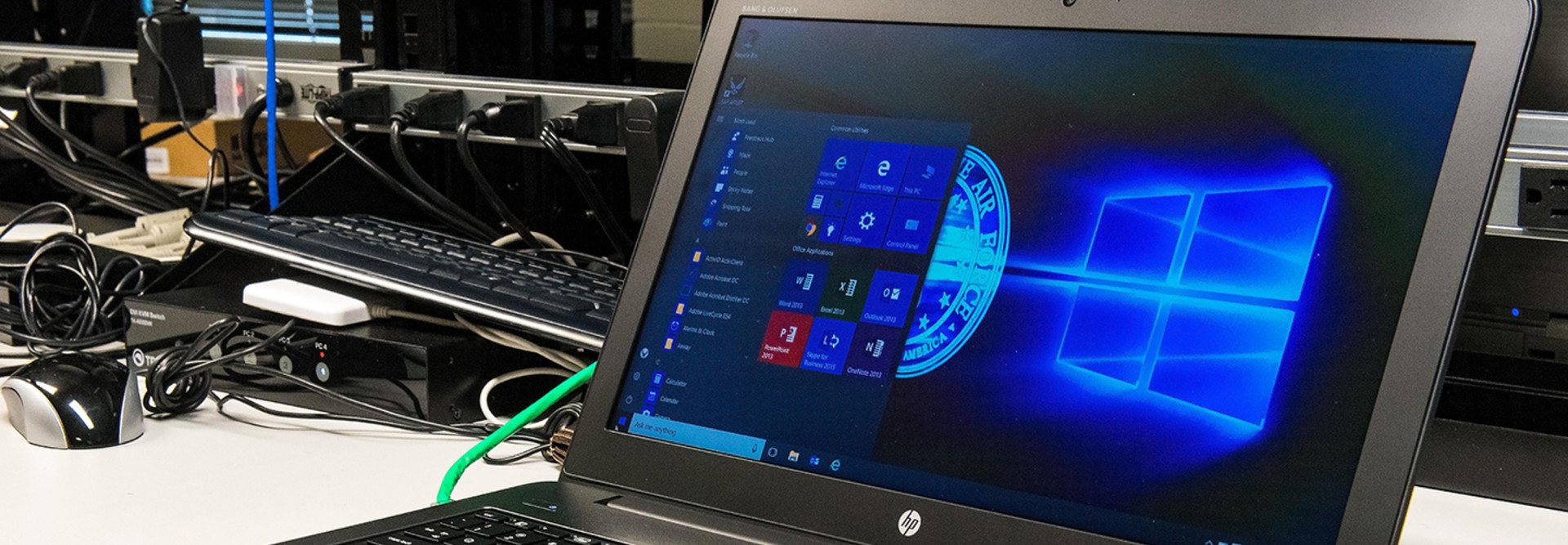The Countdown Is On for Counties to Upgrade from Windows 7
With the end-of-support date looming for Microsoft’s Windows 7, county governments across the country are facing pressure to upgrade their operating systems by Jan. 14, 2020.
After that date, government agencies will need to pay the software giant for security hotfixes, since Microsoft will no longer issue regular security updates for the platform. Meanwhile, Windows 10 offers agencies a bevy of new security features.
Aware that Microsoft software often functions on a roughly 10-year lifespan, Pennsylvania’s Crawford County began transitioning computers that needed repair or replacement to post-Windows 7 operating systems in 2016, according to Timothy Kelley, director of IT and services for the county.
As of 2018, however, a number of machines — 201, approximately a third of Crawford County’s systems — were still running on Windows 7.
Crawford County Works on Its Windows 10 Migration
More than half (56 percent) of the 201 computers — models such as Dell’s Latitude E6530 and E5540 laptops and Optiplex 9010 desktop computers — were compatible with either Windows 10 or Windows 8.1, and could be upgraded accordingly, Kelley says.
“We use mostly Dell computers, and Dell provides a list of which models have been tested with the various Microsoft operating systems and are known to work,” he says. “They also recommend that you do not upgrade machines that haven’t been tested.”
Because the remaining 145 computers that were still running Windows 7 —predominantly Latitude E5520 and E6420 laptops and Optiplex 790 and 990 desktop models — have not been tested for Windows 8.1 or 10 use, the county determined those machines needed to be replaced.
Kelley’s department is purchasing Dell Latitude 3590 laptops and Dell Optiplex 7060 desktop computers to substitute for the units that were not compatible with Windows 8.1 or 10. The new computers will be outfitted with Windows 10.
The project is being funded by a $240,000 allocation that Crawford County commissioners established during the 2019 budget development process after Kelley presented the county’s Windows 7-related update needs.
The migration work, which the department began in January, is scheduled to continue through October, providing some wiggle room in November and December to ensure all units are off Windows 7 by the time support officially concludes in early 2020.
The county was working on the second replacement cycle this spring and expected to be finished by the end of April. “This would put us on track with completing the task by the end of 2019, barring any other complications,” Kelley says.
MORE FROM STATETECH: Find out how Windows 10 can boost agencies' cybersecurity.
Windows 7 End of Life Could Pose Some Challenges
Generally, the Public Technology Institute members that Alan Shark, the organization’s executive director, has spoken to say their local government’s Windows migration efforts are in good shape.
“Many already had a refresh schedule for PCs and laptops and are taking the date very seriously,” Shark says. “Most people have thought it through well in advance of the deadline.”
Rita Reynolds, the CIO of the County Commissioners Association of Pennsylvania, warns that issues could arise, however, if in-house developers do not possess the expertise needed to update legacy applications that local governments sometimes use, or if the vendor that created a particular application no longer exists.
“There might not be a way to upgrade that application — which could involve financial systems, parcel data, tax data systems,” Reynolds says. “The Windows 7 operating system change is on everyone’s radar; most counties have a strategy. A legacy application could throw a monkey wrench into it, though, for a small subset of users.”
In addition to performing a comprehensive software audit to try to assess potential application issues, counties may also want to consider offering instruction to help employees become comfortable with the features of the newer version of Windows once it’s installed, according to Shark.
“People tend to overlook the human factor sometimes — such as people saying, ‘I don't like touchscreens.’ Windows 10 gives you that option; it’s more graphic than 7,” Shark says. “You have to allow for training, whether it’s online or in person, because not everybody is a quick adapter.”
Acknowledging that customers may be at different points in the upgrade process, Microsoft announced in September 2018 a paid option that will allow professional and enterprise customers to receive extended Windows 7 security updates through January 2023. The Windows 7 Extended Security Updates will be sold on a per-device basis, and the price will increase each year, according to Microsoft.
The company’s cloud-based Windows Virtual Desktop service, introduced just a couple of weeks later, will also provide additional security updates for Windows 7 at no cost, to help users support legacy applications as they transition to Windows 10.
If local governments choose not to partake in either option, aside from archiving an application offline or air-gapping a workstation so it’s off the network and not connected to the outside world — which Reynolds says is possible, but does not recommend — continuing to use Windows 7 past the end of support can mean considerable risk.
“Newer operating systems are, of course, going to have more security; the manufacturer is going to continue to patch them,” Reynolds says. “It can be costly, for some, to do an upgrade; but in the long run, it will make the county more secure.”
County governments that have not devised a comprehensive strategy to migrate to a newer version of Windows don't necessarily need to panic at this point. They should be able, Reynolds says, to meet the January 2020 deadline — provided they use a calculated approach.
“The timeframe is still doable,” she says. “It’s not like the sky is falling. If it were September, though, I’d be concerned if someone didn't have a game plan in place.”










